Engine sludge is exactly what it sounds like: an accumulation of dark, greasy, and tarry deposits inside the engine crankcase.
It doesn’t sound pleasing, right? Engines are designed to run with clean motor oil. With the presence of engine sludge, the oil will be unable to lubricate and cool the engine.
More...
What Causes Engine Sludge?
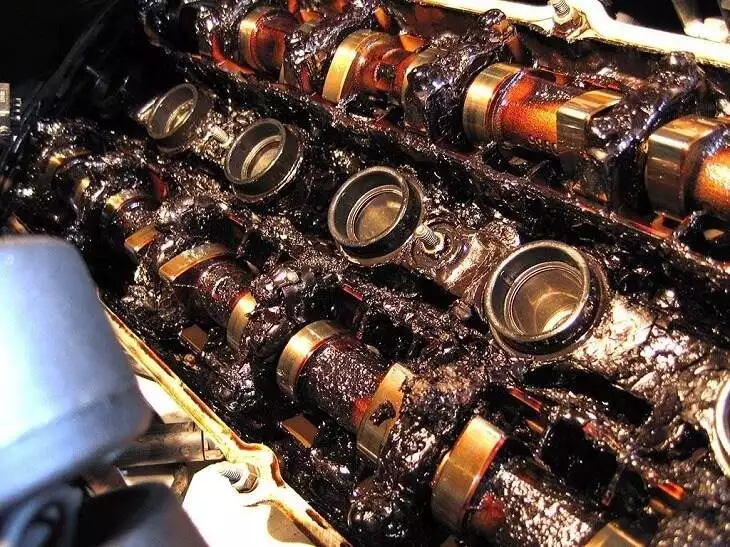
Sludge is caused by the breakdown of oil. If you have a habit of using poor quality or cheap motor oils in your car or bike, then you need to know these facts:
1. The continued use of poor quality motor oils will cause the build-up of engine sludge.
2. Extended oil change intervals or not changing the oil and oil filter periodically will accelerate the formation of engine sludge.
Engine sludge is made up of oxidized motor oil, dirt, soot, water vapor, and leaked coolant. Using a good motor oil will keep all of these harmful contaminants suspended in the oil, ready to be flushed out on your next oil change.
If you have a nasty habit of not changing the oil on a regular basis, then you will most likely deal with engine sludge sometime in the future.
Symptoms Of Engine Sludge
If you notice these symptoms on your car or bike, then you should definitely check the motor for the presence of engine sludge.
- Noisy hydraulic lifters or valve tappets
- The oil warning light is ON while driving the car
- Low oil pressure
- The oil drains slowly when the drain plug is removed
- The presence of dark greasy sludge on the rocker cover and oil filter
You can also check for the presence of engine sludge by pointing a flashlight inside the engine. Simply remove the oil cap and use a flashlight to check for accumulated sludge inside the valve cover.
If you do this, you will notice that the components are all covered in oil, but you should still see the metallic parts glistening in the light. If you see thick tarry deposits inside the valve cover, you might be dealing with a serious case of engine sludge.
Of course, the best way to determine the extent of the damage is to take the motor apart. In severe cases of sludge, you might need to buy a new motor.
How To Remove Engine Sludge In 5 Easy Steps
If you haven’t changed the oil in your car for more than 7,000 kilometers (or approximately 1 year) then you can expect a slight formation of engine sludge. Fear not. Here are the 5 easy steps on how to remove engine sludge.
Things You Need
- Engine flush or oil flush treatment
- Fresh motor oil
- Container to catch the dirty oil
- New oil filter
- Oil filter wrench
- Pressurized air (optional)
Step 1: Treat The Motor With Engine Flush

Park your car is a safe and level area. Open the hood and remove the engine oil cap. Pour a can of engine flush or oil flush treatment inside the engine.
Tighten the engine oil cap and close the hood. Start the car, and let it idle for 10 to 15 minutes. DO NOT DRIVE THE CAR. Just let it idle and warm up thoroughly.
The engine flush will help to liquefy the sludge, making it easier to mix with the dirty oil so you can flush it out completely.
You can use a product like Sea Foam Motor Treatment or Liqui Moly Pro-Line Engine Flush, but you can use any type of engine flush from a reputable manufacturer.
Step 2: Turn Off The Engine And Drain The Oil
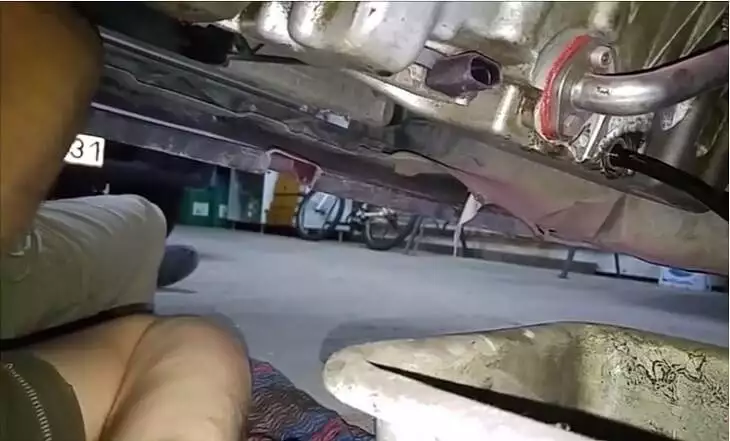
After the engine is all warmed up, it is time to turn off the engine and drain the oil. Simply remove the drain plug in the oil pan and let the dirty oil and sludge drain away. Use a clean container to catch the dirty oil.
Take your time while doing this. You can also use pressurized air to thoroughly clean and flush all the dirt inside the engine. Remove the oil cap, turn on the air compressor, and insert a hose inside the oil filler. The pressurized air will help to further loosen up the dirt and sludge inside the engine so it easily drains out of the motor.
Step 3: Install A New Oil Filter
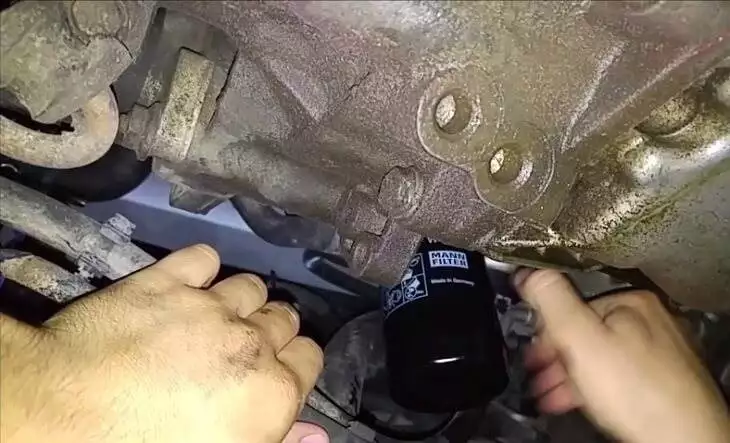
Loosen the oil filter using an oil filter wrench and allow the remaining oil to drain. Discard the dirty filter.
Grab the new oil filter and put a small amount of clean oil on the oil filter gasket.
Use only your hand to install the oil filter. Turn the oil filter in a clockwise direction to tighten.
After draining the dirty oil and installing a new oil filter, you should go ahead and reinstall the drain plug. You don’t want the fresh motor oil to flood your garage, right?
Step 4: Pour Fresh Motor Oil
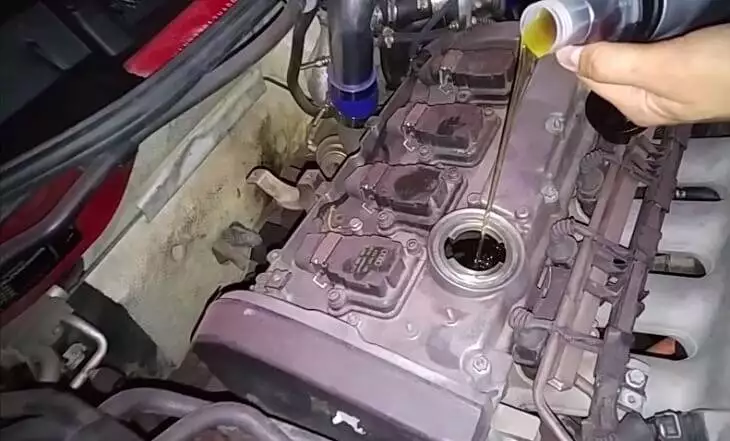
Make sure that you are using the proper grade, weight, and rating of motor oil for your vehicle. When in doubt, refer to the service manual. Not using the right kind of motor oil will contribute to the formation of engine sludge.
Simply pour the motor oil and check the oil level via the dipstick. Do not overfill the motor with oil. The oil level should be in the middle of ADD and FULL.
Step 5: Screw The Oil Filler Cap Tightly
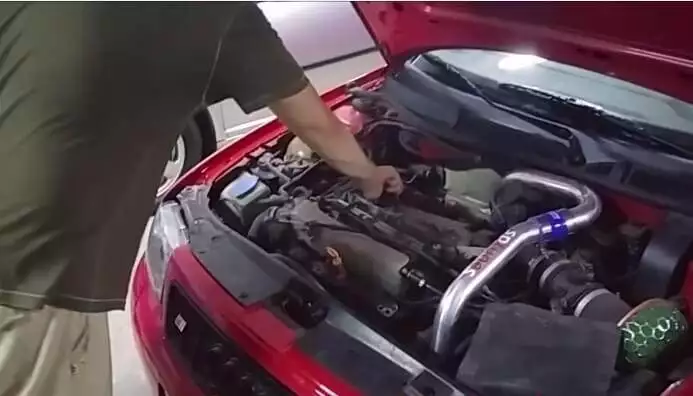
After pouring fresh motor oil and checking the oil level, screw the oil filler cap tightly, close the hood, and you’re done!
How To Prevent Engine Sludge
Here are a couple of tips that will help prevent the build-up of engine sludge inside the motor.
1. Regular oil changes. Make sure that your vehicle is serviced accordingly. Check the owner’s manual for the recommended service intervals.
2. Always use good quality motor oil and oil filter when changing the oil.
3. Avoid stop-and-go driving as much as possible. If your vehicle is subjected to extreme use, then you will need to change the oil more frequently.
4. If you have a diesel engine, it is wise to constantly maintain the integrity of your fuel system. If you detect any abnormalities such as hard starting, knocking, excess smoke, or poor performance, have your car or truck inspected by a qualified mechanic.
Conclusion
It is easy to remove the build-up of sludge inside your engine. Remember to always use a good quality motor oil whenever your vehicle is due for an oil change. It is also advisable to follow the service recommendations of your vehicle to prevent engine sludge from accumulating inside the motor.
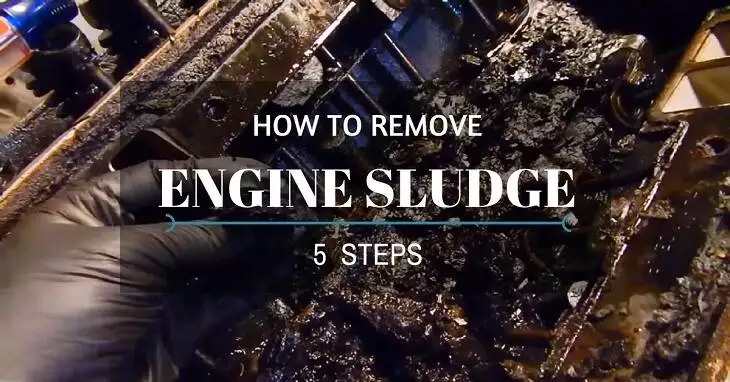
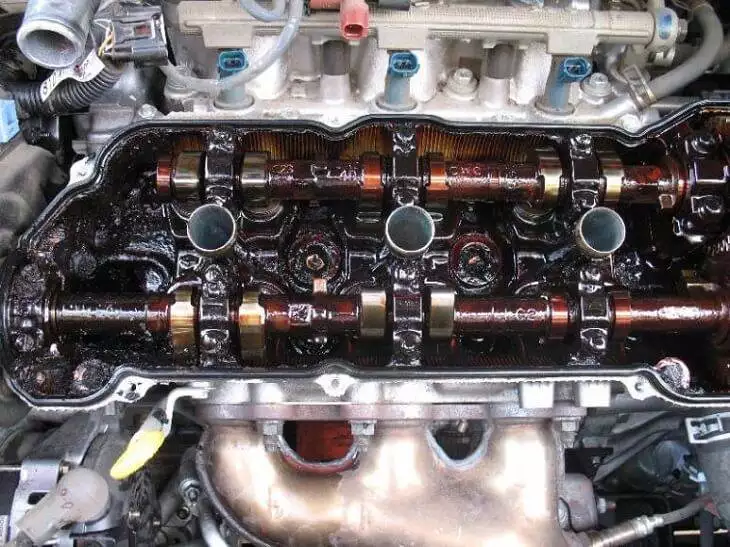
I ve tried to remove the sludge bt after 1000km oil light comes on nd strainer blocked again what can I do
Falta explicar que es un aceite de buena calidad, que evitaría que este se descomponga tan rápidamente,
Loa aceites son de petroleo, pero de acuerdo a sus bases y al tipo de proceso estos tendrán buen comportamiento dentro del motor.
En el mercado actual los aceites de base Grupo II o Grupo III+, con un proceso de hidrocraqueado, luego del destilado, se consigue un buen aceite Full Synthetic o Blend Synthetic, conjuntamente con los aditivos que le mejoran sus propiedades y que soportarán altas temperaturas y esfuerzo de corte dentro de las piezas en movimiento del motor.
I have been using petrol or diesel to clean my motorcycle engine. The engine gets oil stains and sludges and oil breaks them and makes it easier to clean the engine.
I liked what you said about removing engine sludge. I liked what you said about how you should make sure you put the filler cap on tightly after you are done. It does seem like a good idea to get a professional to do this for me.
Bought a 2006 stratus from a woman who took very good care of the vehicle, she boughta New vehicle after driving it up from Alabama and gave the car to her nephew who left it parked for the winter and then he came and picked it up he wasnt sure what to do withthe car, and after opening the hood and seeing a squirrel used the engine as his home for the winter and ate the wireing harness in half he was going to take it to the junk yard but posted it for sale fora couple hundred more than what the junk yard would give the car never seen snow the underbody was immaculant and no rust body was beautiful,so when I bought it I thought wow what a deal just fix the wireing and Ive got a great ride !! So to get to the point I sold the car to my daughter when she got her taxes back and she got about 7 miles down the highway and started chugging and stalled going 70 on the highway she got it on the side of the road and I came to the rescue, after trying to start it and it started long enoughto get it fully away from traffic then wouldnt start again, new battery nothing !! Got it towed back to the house and started checking it out thinking a sensor and as I investigated further I found a think black coal looking substance that was all over everything and seized the motor up!!!unbelievable so I am going to have to xecide what Im gonna do with this car
That’s good to know that you would need some specialized wrenches to get the oil and the filter out. I would think that it would be something that would be better to just have a pro take care of it if you don’t have the tools. If I eve need to flush my boat’s engine, I’ll have to consider just having a pro do it.